
This is a list of Buddhist temples, monasteries, stupas, and pagodas in Indonesia for which there are Wikipedia articles, sorted by location.

This is a list of Buddhist temples, monasteries, stupas, and pagodas in Indonesia for which there are Wikipedia articles, sorted by location.


| Wikimedia Commons has media related to Buddhist temples in Indonesia . |
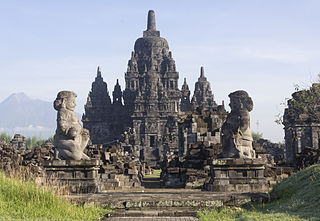
A Buddhist temple or Buddhist monastery is the place of worship for Buddhists, the followers of Buddhism. They include the structures called vihara, chaitya, stupa, wat and pagoda in different regions and languages. Temples in Buddhism represent the pure land or pure environment of a Buddha. Traditional Buddhist temples are designed to inspire inner and outer peace.
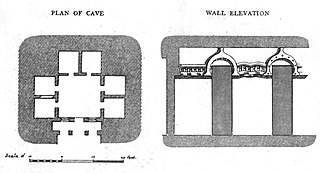
Vihāra generally refers to a monastery for Buddhist renunciates. The concept is ancient and in early Sanskrit and Pali texts, it meant any arrangement of space or facilities for dwellings. The term evolved into an architectural concept wherein it refers to living quarters for monks with an open shared space or courtyard, particularly in Buddhism. The term is also found in Ajivika, Hindu and Jain monastic literature, usually referring to temporary refuge for wandering monks or nuns during the annual Indian monsoons. In modern Jainism, the monks continue to wander from town to town except during the rainy season (Chaturmas), the term "vihara" refers their wanderings.

Buddhists form about 0.9% of the population of Bangladesh. It is said that Buddha once in his life came to this region of East Bengal to spread his teachings and he was successful in converting the local people to Buddhism. About 1.5 million people in Bangladesh adhere to the Theravada school of Buddhism. Over 65% of the Buddhist population is concentrated in the Chittagong Hill Tracts region, where it is the predominant faith of the Rakhine, Chakma, Marma, Tanchangya, other Jumma people and the Barua. The remaining 35% are Bengali Buddhists. Buddhist communities are present in the urban centers of Bangladesh, particularly Chittagong and Dhaka.
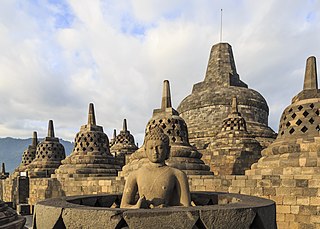
Buddhist religious architecture developed in the Indian subcontinent. Three types of structures are associated with the religious architecture of early Buddhism: monasteries (viharas), places to venerate relics (stupas), and shrines or prayer halls, which later came to be called temples in some places.

Kalasan, also known as Candi Kalibening, is an 8th-century Buddhist temple in Java, Indonesia. It is located 13 kilometers (8.1 mi) east of Yogyakarta on the way to Prambanan temple, on the south side of the main road Jalan Solo between Yogyakarta and Surakarta. Administratively, it is located in the Kalasan District (kapanewon) of Sleman Regency.

Buddhism has a long history in Indonesia, and is recognized as one of six official religions in Indonesia, along with Islam, Christianity, Hinduism and Confucianism. According to the 2018 national census roughly 0.8% of the total citizens of Indonesia were Buddhists, and numbered around more than 2 million. Most Buddhists are concentrated in Jakarta, Riau, Riau Islands, Bangka Belitung, North Sumatra, and West Kalimantan. These totals, however, are probably inflated, as practitioners of Taoism and Chinese folk religion, which are not considered official religions of Indonesia, likely declared themselves as Buddhists on the most recent census. Today, the majority of Buddhists in Indonesia are Chinese, however small numbers of native also exist.

A candi is a Hindu or Buddhist temple in Indonesia, mostly built during the Zaman Hindu-Buddha or "Hindu-Buddhist period" between circa the 4th and 15th centuries.

Candi Plaosan, also known as the 'Plaosan Complex', is one of the Buddhist temples located in Bugisan village, Prambanan district, Klaten Regency, Central Java, Indonesia, about 1 kilometre to the northeast of the renowned Hindu Prambanan Temple.
Indonesian Esoteric Buddhism or Esoteric Buddhism in Maritime Southeast Asia refers to the traditions of Esoteric Buddhism found in Maritime Southeast Asia which emerged in the 7th century along the maritime trade routes and port cities of the Indonesian islands of Java and Sumatra as well as in Malaysia. These esoteric forms were spread by pilgrims and Tantric masters who received royal patronage from royal dynasties like the Sailendras and the Srivijaya. This tradition was also linked by the maritime trade routes with Indian Vajrayana, Tantric Buddhism in Sinhala, Cham and Khmer lands and in China and Japan, to the extent that it is hard to separate them completely and it is better to speak of a complex of "Esoteric Buddhism of Mediaeval Maritime Asia." In many of the key South Asian port cities that saw the growth of Esoteric Buddhism, the tradition coexisted alongside Shaivism.

The Sari Temple is an 8th-century Buddhist temple located at Dusun Bendan, Tirtomartani village, Kalasan, Sleman regency, Yogyakarta, Indonesia. It is located about 130 meters (430 ft) northeast of the Kalasan temple. The temple was a two-story building with wooden beams, floors, stairs completed with windows and doors; all from organic materials which now are decayed and gone. It is suggested that the original function of this building was a vihara, a dwelling place for monks. The temple's name Sari or Saré translates as "to sleep" in Javanese, which also confirms the habitation nature of the building.

A wat is a type of Buddhist temple and Brahminical temple in Cambodia, Laos, East Shan State, Yunnan and Thailand. The word wat is a thai word that was borrowed from Sanskrit vāṭa, meaning 'enclosure'. The term has varying meanings in each region, sometimes referring to a specific type of government-recognised or large temple, other times referring to any Buddhist or Brahminical temple.
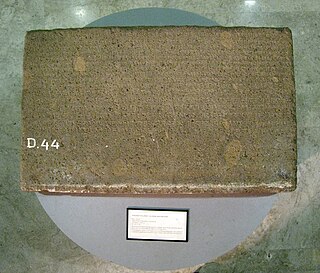
The Kelurak inscription is an inscription dated 704 Saka, written in Sanskrit with Pranagari script, discovered near Lumbung temple in Kelurak village, Central Java, Indonesia. Lumbung temple is a bit north of Prambanan temple in Yogyakarta.
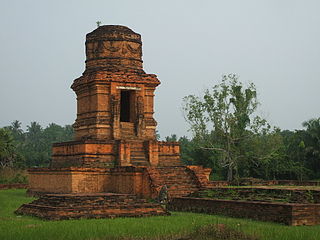
Candi Bahal, also known as Biaro Bahal or Candi Portibi is Vajrayana Buddhist candi complex in Bahal village, Padang Bolak, Portibi, Padang Lawas Regency, North Sumatra, Indonesia. It is located about three hours journey with car from Padangsidempuan or 400 km from Medan. The complex includes three candis: Candi Bahal I, Candi Bahal II, and Candi Bahal III. The temple site is linked to Pannai Kingdom circa 11th to 13th century CE.

Jawi temple is a syncretic Hindu-Buddhist candi (temple) dated from late 13th century Singhasari kingdom. The temple is located on the eastern slope of Mount Welirang, Candi Wates village, Kecamatan Prigen, Pasuruan, East Java, Indonesia, approximately 31 kilometers west of Pasuruan city or 41 kilometers south of Surabaya. The temple located on the main road between Kecamatan Pandaan – Kecamatan Prigen and Pringebukan. The temple was thought to be a Hindu-Buddhist place of worship, however the temple actually was dedicated as mortuary temple to honor King Kertanegara, the last king of Singhasari. It is believed that the ashes of the late king were also placed in two more temples, the Singhasari temple and Jago temple.
Maha Vihara Maitreya,, is a Buddhist temple located on Medan, which is claimed to be the largest non-historical buddhist temple in Indonesia. This temple is often called Vihara Cemara Asri because it is located in housing complex of Cemara Asri. Maha Vihara Maitreya was built in 1991 on an area of 4.5 hectares and was inaugurated on August 21, 2008.
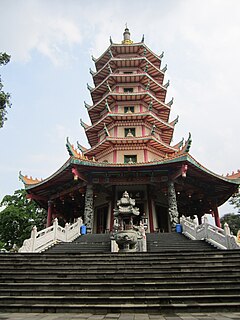
Vihara Buddhagaya Watugong also known as Vihara Buddhagaya is a Buddhist temple located in Semarang, Indonesia.